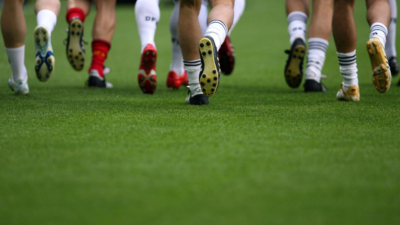Football is a physically demanding sport characterised by frequent strenuous activities, we are going to look at the components of fitness within this sport such as high-intensity running, turning, tackling and jumping.
Players must be able to cope with these physical demands and still be capable of maintaining the technical standard throughout the match. Playing matches regularly helps maintain the fitness level of a player, but additional fitness training is also required.
Every football player in the world, regardless of the standard of play, could benefit from a fitness-training Programme.
Purpose of fitness training
Players must understand the importance of being fit for football and the need to train specifically for the sport they play. Footballers must have a good level of stamina and fitness to play the game, so they can be as good and level-headed at the end of the game as they were at the start.
Therefore, football players need a combination of aerobic and anaerobic fitness due to the nature of the game and the fact that there is continuous movement with lots of short bursts of more intense activity. However, some playing positions require higher levels of aerobic fitness than others and some require more anaerobic fitness.
For example, a midfielder is required to cover a lot of ground during a game, working from box to box so, therefore, will need very good aerobic capacity. Whereas a striker requires short bursts of repeated activity throughout the game such as speed and will need to display higher anaerobic fitness levels.
How to train

The training should be specific to football, with an emphasis on performing the majority of the exercises with a ball. Involving a ball during practice ensures that the muscles used in football are trained and also elevates the motivation of players.
This also allows for efficient use of possible limited training time, as technical and tactical skills are also practised. However, with a lot of emphasis being placed on technical skill development in current training programs, players can develop a real competitive advantage by also focusing on their strength and conditioning.
Enhancing physical abilities can not only have an impact on skill development but can also reduce the risk of injury and improve overall performance in a match.
Aerobic Fitness explained
Aerobic fitness determines the level at which a player can take in and use oxygen to perform an activity. For example, jogging is an aerobic activity, where players can run slowly for some time without getting completely fatigued or out of breath.
Aerobic training will increase the level at which this fatigue takes place, and will make the heart and lungs more efficient for exercise. Players will be able to run further and longer before getting tired.
Anaerobic Fitness explained

Anaerobic fitness determines the level at which a player can work at a high intensity. This usually means short bursts of activity, where they will often be out of breath.
This is due to working at a higher level of intensity where the body cannot provide enough oxygen and the muscles need to get energy from glycogen (a stored form of energy). An example of an anaerobic exercise is sprinting. Working at a high-intensity level is only sustainable for a short time before fatigue sets in and the body goes into oxygen debt.
Anaerobic training will make the body more efficient at using glycogen as a stored fuel and also helps to deal with oxygen debt. However, one effect is the build-up of lactic acid (due to the lack of oxygen getting to the muscles), which is felt when the legs, for example, feel a burning sensation at the end of an intense long sprint.
Anaerobic training helps make the muscles more efficient at coping with lactic acid and better at removing waste products from the muscles.
Conclusion
One of the best ways of improving both aerobic and anaerobic fitness for football is called Fartlek training, which is a Swedish term meaning, Speed play. It is a running session that combines speed and endurance by varying the speed and intensity, thus conditioning the body to become faster over longer distances.
This is very beneficial for pre-season training and in preparation for the game of football as it requires players to utilise interchangeable energy systems. By increasing the intensity during training, the players will be switching from aerobic to anaerobic energy supplies.
For example, a striker may be walking or jogging in the opposition half to get back on-side, when the ball is played over the top. The striker must immediately turn and sprint full speed after the ball, slow down and dribble. Fartlek training will help players adjust to the random need of sprinting, running backwards, walking, jogging etc. throughout an entire match.
Training the aerobic and anaerobic thresholds will improve the cardiovascular and speed endurance of the players which will help them perform at a higher intensity for a long period in football without tiring quickly.
Fartlek training is less tedious than typical interval training and can be easily adapted to focus on the team’s needs. It only requires 20 to 30 minutes, including the warm-up and cooldown, where the player trains at varying speeds and intensities.
A sample Fartlek session for football:
- Warm up with a steady jog for approximately 7-10 minutes
- High-intensity sprint, for about 60-75 seconds
- Light Jog for roughly 130-150 seconds (mix it up, backwards, sideways etc.)
- High-intensity sprint, for approximately 60-75 seconds
- Light Jog for 120 seconds (mix it up)
- Repeat 3-4 times
- Cool down with a steady jog for 7-10 minutes
If you enjoyed this article and have any questions or comments or just wish to share your thoughts.
Please leave them in the comments box and I will respond once I get the chance.


